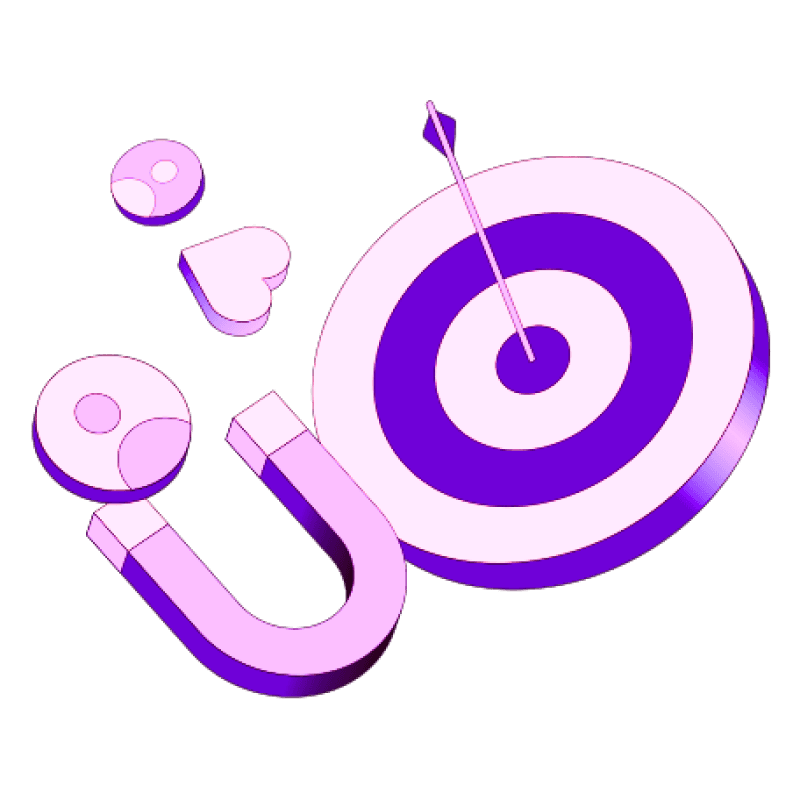Blogs
Articles

Sales Process Best Practices: 7 Steps to Optimize Your Workflow
Sales representatives spend only 33% of their time selling. That's quite eye-opening, isn't it?
B2B sales cycles typically last between three to nine months. Enterprise businesses might need even more time. Many sales teams still use outdated processes that slow down their deal velocity. Sales processes can become complex quickly because they have many moving parts.
A well-laid-out sales workflow helps your sales reps participate with prospects throughout the buying funnel. Research also shows that 76% of employees stick around longer when they get the support and training they need.
An optimized sales workflow leads to predictable revenue, reduces rep burnout and improves customer experience. It positions your organization to grow steadily. In this piece, we'll explore seven practical steps that optimize your sales process and boost your team's performance.
Step 1: Map Your Current Sales Workflow
You need to understand how your current workflow functions before optimizing your sales process. A map of your existing sales workflow creates the foundation for successful optimization. This step helps you find inefficiencies, bottlenecks, and areas you can improve.
Document each stage of your sales process
Sales process flowcharts that work have clear stages from the first prospect interaction to closing deals and beyond. Take a close look at your sales cycle from beginning to end and write down each key phase.
A simple B2B sales process has these key stages:
Prospecting: Identifying potential customers and qualifying leads
Discovery: Researching prospects' pain points and needs
Scheduling demos: Arranging presentations after qualification
Product demonstrations: Showcasing how your solution solves problems
Handling objections: Addressing concerns that arise during the sales process
Closing: Finalizing the deal and securing the sale
Customer onboarding: Helping clients implement your solution successfully
Identify key roles and responsibilities
Sales processes need multiple stakeholders who each have specific responsibilities. A clear picture of these roles creates accountability and helps everyone understand the process better.
Talk to your sales representatives about their daily workflows. They know firsthand how deals move forward and what challenges they face. Their insights will help you create an accurate process map.
Key stakeholders in the sales process usually include:
Sales Development Representatives (SDRs): Primarily responsible for prospecting and qualifying leads
Account Executives: Focus on closing deals and managing customer relationships
Sales Managers: Oversee the entire sales operation and bridge communication with upper management
Pre-Sales Consultants: Provide technical expertise during demonstrations
Customer Success Managers: Handle customer onboarding after the sale
Think about the buying roles on your prospect's side too. You'll find champions, influencers, decision-makers, gatekeepers, and end-users. Understanding these roles helps you line up your process with customer needs and makes transitions smoother.
Write down who handles what at each stage. This clarity stops confusion, prevents missed tasks, and creates a better customer experience.
Use visual tools like flowcharts or diagrams
Visual maps of your sales process make it easier for everyone to understand the workflow. These tools turn complex ideas into clear, actionable steps.
You have several options to create effective sales process flowcharts:
CRM Software: If you use Salesforce or similar platforms, use their built-in visualization tools
Specialized Flowchart Tools: Lucidchart, Miro, and similar platforms offer accessible interfaces made for process mapping
Standard Office Tools: PowerPoint or Google Slides can create good flowcharts too
Your visual sales process map should use standard symbols: ovals for start/end points, rectangles for process steps, diamonds for decision points, and arrows that show flow direction.
A good flowchart shows more than just the perfect scenario. Add different routes based on common objections or delays. This helps your team prepare for various situations they might face.
The best sales process maps become active tools that teams use regularly. Pick tools that make it easy to update, collaborate, and access information - especially for mobile users who need details between meetings.
A detailed map of your current sales workflow builds the foundation for future improvements. Understanding your process helps you find ways to improve and make changes that boost performance.
Step 2: Set Clear Sales Objectives
Clear sales objectives are the life-blood of a successful sales process. Research shows that sales task clarity affects field salespeople's motivation more than ego drive or compensation method. Your sales team might work toward conflicting priorities and lose focus without clear direction.
Arrange goals with business outcomes
Top organizations know their sales objectives must directly connect to broader company initiatives. Sales team goals often drift away from strategic priorities, which hurts optimization efforts. The solution starts when everyone acknowledges they're working toward the same goals.
To work well, link your sales objectives to your North Star business outcomes. These could be company goals like doubling revenue or entering new markets - you need agreement on common business outcomes. This unified strategy helps sales and marketing leaders look beyond their departments. They can better understand how their objectives connect.
Here's a practical way to start: determine your company's sales goals based on your unique value proposition. Your sales reps should show this value to customers in every interaction. These activities will help them close more deals - your number-based goal.
Define short-term and long-term targets
Top sales leaders know short and long-term goals work together. One expert puts it well: "The best long-game players know you need short-term pivots to shape long-term results."
Short-term goals take less than a year - sometimes just months. Long-term goals need at least a year or more. Long-term goals often break down into smaller, short-term targets that make big visions manageable.
A long-term goal might be "reach top-three market share in five years." Short-term goals could be quarterly targets supporting this vision. This structure means each small goal helps achieve the bigger one.
The SMART framework works great for creating actionable sales objectives. This method will give a goal that's:
Specific: Clear success expectations
Measurable: Numbers instead of descriptions (like "5% more closes")
Attainable: Challenging but possible targets that keep morale high
Relevant: Matches company resources and abilities
Time-bound: Clear deadlines and checkpoints
Psychologists Locke and Latham's research shows specific and challenging goals beat vague or easy ones. Your goals should point out skills to develop and reveal process gaps to improve simplified processes.
Make sure everyone understands objectives
Success depends on clear communication of sales objectives across your organization. Sales teams perform better when they know the strategy, target customer, and performance metrics.
Get your sales team involved in goal-setting. The best way to set clear priorities is direct talks with reps, sales managers, and other departments that share sales information. Information providers can list priorities, while reps and managers identify their needs. This shared approach creates a strategy that delivers critical information without distractions.
Schedule regular team meetings after setting objectives. Hold monthly or quarterly in-person reviews of company revenue targets and individual goals. This ongoing communication beats annual planning. It keeps expectations clear and helps teams progress steadily.
Note that achievement deserves recognition when teams meet objectives. Public praise of top performers sets an example. Regular performance reviews help track progress against past results and preset goals.
These best practices for setting clear sales objectives create a focused process. Every team member knows their role in achieving shared success. Well-laid-out objectives form the foundations for consistent sales performance, unlike vague tasks that can hurt even the best compensation plans.
Step 3: Define and Track Key Performance Indicators (KPIs)
Your next significant step after setting clear goals for your sales team is to learn what to measure and track progress. KPIs act as vital signs of your sales process. They show what works well and what needs improvement.
Choose relevant sales metrics
The right sales KPIs will help you reach your business targets. The most effective KPIs follow the SMART framework specific, measurable, achievable, relevant, and timely. A focused approach works better here. Your team can concentrate on main goals by tracking fewer, more meaningful metrics instead of drowning in data.
Your KPIs should match your company's sales objectives. Two companies might sell similar products but track different metrics based on their specific goals. One company might want to expand territories while another wants more local customers.
These categories can help you pick your KPIs:
Pipeline KPIs: These measure future sales indicators, including pipeline coverage ratio, lead-to-opportunity conversion rate, and sales cycle length
Productivity KPIs: These show team efficiency through metrics like calls per rep, meetings booked, and sales activities completed
Revenue KPIs: These reveal financial health using annual contract value, customer lifetime value, and customer retention rate
Sales Performance KPIs: These reveal individual effectiveness via win rates, average deal size, and sales cycle completion
Sales metrics and KPIs serve different purposes. Metrics measure any quantifiable aspect of sales performance or activity. KPIs track performance against strategic goals. The difference is simple: metrics show what happens, while KPIs show what matters.
Establish baseline performance
A clear picture of your current position helps improve performance. Baseline sales show the regular sales volume under normal market conditions. This excludes external factors like promotions or seasonal effects. The baseline reveals your product's organic market demand.
Here's how to set your baseline:
Define key metrics that match organizational objectives and priorities
Observe sales levels during normal periods without promotional influences
Average these figures over your chosen timeframe to create your baseline
Measure against industry standards using government statistics or industry reports
To cite an instance, an eCommerce bookstore might sell 300 units weekly without discounts or seasonal offers—that's their baseline sales. Sales teams often measure current performance against previous results. A 10% close rate last quarter might lead to a 12% target this quarter.
The baseline helps set realistic sales targets based on past performance. It creates measures for key performance indicators and lets you assess individual and team performance objectively.
Use KPIs to guide decision-making
KPIs become valuable tools for strategic decisions about your sales process. They help identify trends, spot performance deviations, and find ways to improve.
KPIs combine raw data into essential business metrics that measure activities against goals. Your team might assign more resources to a new product that shows better-than-expected sales. They might adjust pricing or focus on another product if competitive pricing affects performance.
These steps will help you get more value from your KPIs:
Automate data collection from your CRM and other systems to avoid human error
Set up reporting dashboards that give self-service access to KPI tracking
Establish target thresholds to provide context on performance expectations
Conduct regular reviews with sales leaders to discuss outcomes and next steps
Most CRM platforms offer customizable visualization tools or dashboards with your key KPIs. These provide immediate insights into which sales activities bring the most sales and which reps meet their targets. Everyone from reps to executives can see sales health clearly and make decisions that keep revenue flowing.
Step 4: Identify and Eliminate Bottlenecks
Bottlenecks can severely affect your results, regardless of how well-designed your sales process appears. Companies lose up to 30% of their annual revenue due to inefficient processes. Your sales momentum and conversions depend on identifying and removing these obstacles.
Analyze conversion rates at each stage
A stage-by-stage conversion analysis shows exactly where prospects get stuck in your sales funnel. You can focus on fixing specific problem areas rather than making broad improvements with this detailed approach.
Measure the average time deals spend in each stage of your sales process. Long durations often point to potential bottlenecks. Key areas to monitor include:
Conversion percentages between stages: Sharp drops indicate problems
Time between stages: Look for delays beyond your baseline
Deals that frequently stall at specific points: These reveal systemic issues
Sales teams often find surprising insights about their true conversion challenges through this analysis. To name just one example, many leads not moving from discovery to demo requests might show gaps in your lead nurturing strategy or follow-up process.
In fact, knowing what sets won deals apart from lost ones can boost conversion rates by up to 33%. So, studying opportunities that successfully moved through problematic stages helps identify patterns worth repeating.
Spot delays and inefficiencies
Several warning signs point to process inefficiencies beyond conversion metrics. These common bottleneck indicators deserve attention:
Internal red tape kills deals fast. Your prospect might be ready to move forward while your team waits on approvals or routes documents through multiple managers. Buyer excitement often cools by the time approval arrives or worse, they choose a competitor who moved faster.
Deals staying in the same stage for unusually long periods raise red flags. This points to unclear processes, inconsistent follow-up practices, or team misalignment. Most deals pending more than 30 days fail to close, highlighting why addressing these delays matters.
Lead quality plays a crucial role. Sales reps waste time pursuing unqualified prospects when more than half the leads are low-quality. This creates a bottleneck of wasted effort.
Handoff processes need careful attention. Team transition delays and communication breakdowns create significant bottlenecks. These interruptions affect your conversion rate and make your sales cycle longer than necessary.
Streamline handoffs between teams
Marketing to sales handoffs often let valuable leads slip through the cracks. A seamless transition between departments prevents missed opportunities and lost revenue.
Clear communication channels between teams must exist. Marketing should give sales complete lead information, including interests, priorities, and buying stage. This helps your sales team tailor their approach effectively.
Structured handoff forms make a difference. Many teams use ad-hoc methods and just "wing it" on calls. Enterprise-level deals might need customer success joining sales calls in a sales engineering capacity. Mid-market deals require evaluation of current handoff protocols' effectiveness.
Timing makes a significant difference. Balance passing leads too early (before sales-readiness) versus too late (after interest wanes or alternatives emerge). Finding the right triggers that show a lead's readiness requires close collaboration.
Automated handoff mechanisms eliminate manual bottlenecks in lead progression. Your tech stack should include triggers that ensure consistent transitions and create an informed feedback loop where:
Sales teams share insights about lead quality
Marketing teams provide data about prospect engagement patterns
Both departments check shared performance dashboards regularly
A methodical approach to identifying and eliminating bottlenecks creates an efficient sales workflow. Note that sales process improvement needs intention, analysis, and openness to change. Streamline where possible, train when needed, and consider rewiring the entire process if it leads to faster, healthier growth.
Step 5: Automate Repetitive Tasks
Sales teams waste about two-thirds of their time doing tasks unrelated to selling. This reality explains why automation plays a vital role in sales process optimization. The right technology will eliminate repetitive tasks that kill productivity so your team can focus on what matters most building relationships and closing deals.
Use CRM and sales workflow automation tools
Your sales automation journey starts by picking the right CRM platform with powerful automation features. Good CRM automation tools will capture, store, and access contact details automatically. Your contact database stays accurate and current as the system logs customer interactions automatically.
Your automation tools should have these key features:
Automatic email sync with contact profiles
Regular performance report generation
Visual pipeline management
Integration with your current tech stack
Lead scoring capabilities
You need to understand and improve your existing sales processes before automating them. Many companies make the mistake of automating bad processes instead of fixing them first. Start by reviewing your sales cycle to find time-consuming repetitive tasks that don't add much value.
Automate follow-ups and data entry
Sales teams spend too much time on data entry and follow-ups. CRM systems can help by automatically updating customer information and scheduling outreach.
Email automation stands out as one of your most powerful tools. You can set up personalized outreach emails, drip campaigns, and follow-up sequences that keep communication with prospects consistent. Your lead scoring system can automatically assign values to prospects based on their engagement, industry, or company size, then route high-priority leads to the right representatives.
Your system should work smoothly with popular CRMs like HubSpot and Salesforce. This two-way sync lets information flow between systems automatically and eliminates duplicate work.
Free up reps for high-value activities
Sales automation does more than just streamline processes—it lets your team spend time on what matters. Your sales professionals can save about 2 hours and 15 minutes every day by automating administrative tasks. This extra time goes straight into building relationships and closing deals.
AI-powered sales automation puts repetitive conversations on autopilot through smart notifications and deadline reminders. It also helps catch good leads before they slip away by tracking interactions and ensuring proper follow-up.
Your team should still quickly review calls to catch missing details, even with automated data capture. Tools like Persana can help automate workflows while keeping that personal touch customers expect.
A systematic approach to automating repetitive tasks creates an efficient sales process. This boosts team performance and customer experience, which leads to long-term growth.
Step 6: Align Sales and Marketing Teams
Sales and marketing teams create powerful results that directly affect your sales workflow effectiveness. Companies with properly lined up sales and marketing departments grow revenue 24% faster than others. Many organizations don't deal very well with bridging the gap between these traditionally separated functions, despite the clear benefits.
Create shared definitions for leads
Different definitions of qualified leads often cause misalignment. Sales representatives waste valuable time pursuing prospects who aren't ready to convert when marketing delivers leads they consider qualified but sales disagrees. Your sales process optimization efforts suffer because of this disconnect.
These steps help establish clear lead definitions:
Sales and marketing teams must cooperate to develop qualification criteria that meets both departments' needs. Both teams should define specific engagement metrics or behaviors that qualify a lead as Marketing Qualified (MQL) versus Sales Qualified (SQL). The teams should understand that high-quality leads need more time and resources to generate.
A formal documentation of these definitions becomes essential. Teams must write down lead stages and share them with customer-facing staff. This documentation becomes significant especially when you have complex sales environments with multiple teams or external partners.
Cooperate on content and messaging
Customer confusion and trust erosion happen due to inconsistent messaging. Teams that line up well deliver unified communication throughout the customer's trip, which builds credibility and shortens sales cycles.
Regular cross-functional meetings help sales and marketing discuss objectives, KPIs, and deliverables. The teams should create feedback loops where sales gives insights about customer interactions and marketing shares data about prospect engagement patterns.
These steps enable content cooperation:
Sales teams should participate in marketing campaign planning and material development
Teams should maintain a central repository for approved sales and marketing collateral
Content should address specific sales stages and common objections
Use integrated tools to improve visibility
Common technology platforms eliminate information silos and strengthen alignment. Most cooperative teams use tools like CRM, marketing automation, and content repositories to ensure everything gets used.
Project management software gives teams visibility into each other's activities without extra meetings. Currently, 71% of marketers want more visibility into lower-funnel activities, while 39% of sales representatives want to learn about upper-funnel initiatives.
A sales content management system or enablement platform should host all approved materials. This setup helps representatives find the latest resources and allows marketing to track usage. The shared technology ecosystem creates clarity across teams and enables faster execution with consistency at every customer touchpoint.
Step 7: Monitor, Iterate, and Improve
Sales process optimization is not a one-time task but a cycle that never ends. Research shows 80% of employees who get meaningful feedback stay fully engaged. A continuous improvement strategy needs a well-planned system to watch, analyze, and enhance your sales workflow.
Collect feedback from sales reps
Your sales representatives interact with customers daily and their insights are a great way to get process improvements. The sales team knows which features stop potential customers from buying and where products fall short. Sales leaders should create multiple ways to gather this feedback:
Regular one-on-one meetings that blend quantitative data with qualitative feedback
A simple feedback tracking system that merges with your CRM
A "feedback champion" from your sales team who can represent their views
The feedback collection process must be "stupid simple" for your team. Your representatives won't comply if they must leave their usual tools to share insights. The best option is feedback tracking software that merges with your existing CRM system.
Review performance data regularly
Your sales process will stagnate without quarterly progress assessments. Research shows 21% of employees set goals once a year and never look at them again. Top organizations do things differently by setting up regular performance reviews:
Quarterly reviews help you spot changes that need quick action. Monthly informal check-ins can give you better visibility and help tackle obstacles quickly. Watch for warning signs like falling win rates that might show tougher competition or pricing issues.
Refine your sales process optimization plan
Your team should work together to create improvement plans based on these insights. The solution works better when everyone contributes.
Your plan should include:
Finding root causes of performance gaps (product knowledge, sales tactics, or lead quality)
Building customized, measurable interventions with clear timeframes
Creating milestones with regular check-ins to track progress
The Persana platform can help you put these improvements in place systematically. This tool streamlines optimization efforts while you retain control over your sales workflow.
Conclusion
Your sales process needs dedication, consistent effort, and adaptability. The seven steps above give you a roadmap to turn your sales workflow into an efficient system that drives results.
Sales process optimization is one of the best ways to boost revenue without adding headcount or marketing spend. Many companies still use outdated and inefficient processes, but your organization can now break free from these limitations.
Setting clear objectives, tracking meaningful KPIs, removing bottlenecks, automating tasks, and lining up teams will pay off big time. These steps work together to create a sales ecosystem where your team spends more time selling instead of handling paperwork.
Excellence in sales takes time. Your team should tackle this optimization trip with patience and persistence. Small improvements add up over time and lead to big performance gains that separate your organization from competitors.
Teams that use these best practices see shorter sales cycles, higher conversion rates, and better customer relationships that boost revenue growth. Representatives also feel more involved and supported when they work with an efficient process.
Take a look at your current sales process and work through each optimization step. The gap between good and great sales teams comes down to execution - doing things right and doing them often.

Create Your Free Persana Account Today
Join 5000+ GTM leaders who are using Persana for their outbound needs.
How Persana increases your sales results
One of the most effective ways to ensure sales cycle consistency is by using AI-driven automation. A solution like Persana, and its AI SDR - Nia, helps you streamline significant parts of your sales process, including prospecting, outreach personalization, and follow-up.



